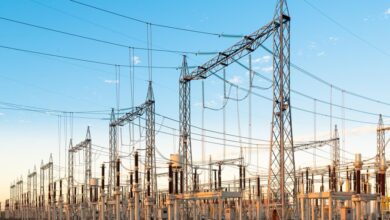Why Comparing Wicknell Chivayo’s Shoes to ZESA Power Stations is Silly & Misguided

The internet loves sensational comparisons, especially when they juxtapose luxury spending with pressing societal needs. One such example is the viral headline, “Wicknell Chivayo’s Shoes Can Buy 5 ZESA Power Stations”. While eye-catching, this type of comparison is overly simplistic, ignoring key nuances about personal wealth, economic priorities, and the complexities of infrastructure investment. Here’s why such comparisons are more silly than substantive.
1. Personal Wealth vs. Public Investment
Wicknell Chivayo’s shoe collection, reportedly worth $117,200, represents personal expenditure and lifestyle choices, while energy infrastructure is a public utility requiring coordinated planning, significant financing, and long-term policy frameworks. Comparing private spending on luxury items to national infrastructure projects conflates individual consumer behavior with the collective responsibility of governments and businesses to address public needs.
2. Inadequate Cost Analysis
The claim that Chivayo’s shoes could “buy five ZESA power stations” lacks proper context. First, the cost of a renewable energy project like a solar power plant varies greatly depending on scale, technology, and location. Tanganda Estates, a private agricultural enterprise, installed solar power plants across three of its five estates with a total cost of $22,400 for 280 panels. This scale of investment is not equivalent to the construction of a full-scale ZESA power station, which would require far more capital, regulatory approvals, and specialized equipment. The comparison reduces complex projects to overly simplistic dollar-for-dollar equations, which can be misleading.
3. False Equivalence of Value and Impact
Tanganda’s solar power initiative offers clear economic and environmental returns by generating clean energy, providing grid resilience, and creating a potential revenue stream through net metering. Renewable energy investments align with broader societal goals of sustainability and energy security. In contrast, luxury goods like expensive shoes, while symbols of personal achievement, do not offer the same tangible public benefits. However, wealth creation and consumer spending, even on non-essential items, also play a role in stimulating the economy. Suggesting that Chivayo’s personal spending detracts from societal progress oversimplifies the relationship between private wealth and public good.
4. Skewed Moral Judgments
Articles that pit luxury spending against social needs often rely on moral judgments that ignore individual rights to spend money as they choose. While it is fair to highlight disparities in resource allocation, it is unfair to imply that individuals with significant wealth are solely responsible for solving systemic issues like energy access or climate change. National energy challenges require collective action, including policy reform, corporate responsibility, and international investment—not just the redirection of private spending.
While the comparison between Wicknell Chivayo’s shoes and solar investments makes for engaging headlines, it fails to provide meaningful insights into energy policy, economic priorities, or personal finance. Discussions about renewable energy investments are important, but they should be grounded in a serious analysis of structural solutions rather than sensationalist rhetoric. Addressing energy crises requires thoughtful policy, sustainable investment strategies, and collaboration across sectors—not simplistic comparisons of consumer spending habits.




